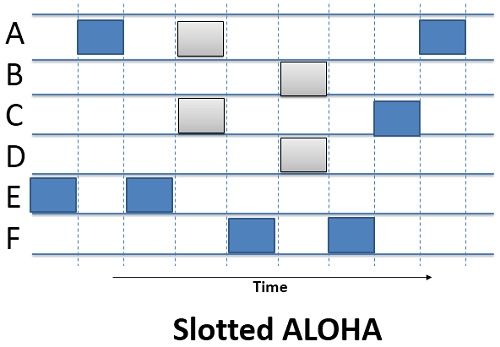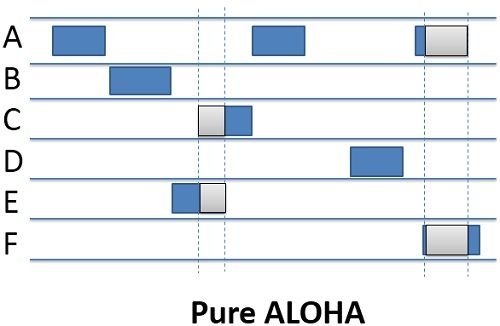Pure ALOHA vs Slotted ALOHA
Difference Between Pure ALOHA and Slotted ALOHA
Pure ALOHA and Slotted ALOHA both are the Random Access Protocols, that are implemented on the Medium Access Control (MAC) layer, a sublayer of Data Link Layer. The purpose of the ALOHA protocol is to determine that which competing station must get the next chance of accessing the multi-access channel at MAC layer. The main difference between Pure ALOHA and Slotted ALOHA is that the time in Pure Aloha is continuous whereas, the time in Slotted ALOHA is discrete.

Pure ALOHA and Slotted ALOHA both are the Random Access Protocols, that are implemented on the Medium Access Control (MAC) layer, a sublayer of Data Link Layer. The purpose of the ALOHA protocol is to determine that which competing station must get the next chance of accessing the multi-access channel at MAC layer. The main difference between Pure ALOHA and Slotted ALOHA is that the time in Pure Aloha is continuous whereas, the time in Slotted ALOHA is discrete.
| Basis for Comparison | Pure ALOHA | Slotted ALOHA |
|---|---|---|
| Introduced | Introduced by Norman Abramson and his associates at the University of Hawaii in 1970. | Introduced by Roberts in 1972. |
| Frame Transmission | The user can transmit the data frame whenever the station has the data to be transmitted. | The user has to wait till the next time slot start, to transmit the data frame. |
| Time | In Pure ALOHA the time is continuous. | In Slotted ALOHA the time is discrete. |
| Successful Transmission | The probability of successful transmission of the data frame is: S= G* e^-2G | The probability of successful transmission of the data frame is: S= G*e^-G |
| Synchronization | The time is not globally synchronized. | The time here is globally synchronized. |
| Throughput | The maximum throughput occurs at G = 1/2 which is 18%. | The maximum throughput occurs at G = 1 which is 37%. |


Comments
Post a Comment